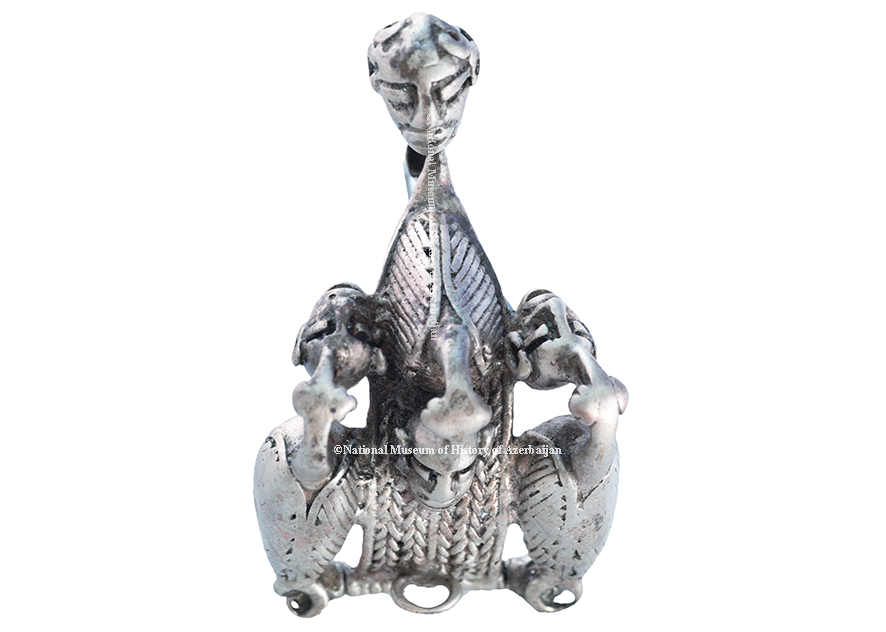
In The National History Museum of Azerbaijan’s funds there are many metalware rarities, all produced locally and distinguished for rich and colourful design. One of such adornments is a silver fibula pin discovered in 2017 by the archaeologist Gafar Jabiyev from a stone grave detected in Damirchi village of Shamakhi. As seen from the archaeological investigation records of Azerbaijan, differently shaped fibulas have been quite frequently detected on the sites dating back to the Bronze age through early Medieval period inclusively. However, this very example deserves special mention due to its’ completely unique structure. It deserves mentioning that the artefact has a smaller analogue dating back to the I millennium B.C. The former has been discovered in the middle of XX century by the archaeologist Saleh Gaziyev in Mingechevir. Some scientists suggest that fibulas were brought to the region as a matter of cultural and trade relations with Romans. However, the fact that our ancestors had been using different fibulas since the Bronze age, and that the silver fibulas from Mingechevir and Shaki are completely different from their Central European and Northern Black Sea analogues, allow concluding that locally discovered fibulas had been mastered by local craftsmen. Moreover, as suggested by the latest studies there is a distinct connection between these fibulas from the one side, and fairy tales, carpet patterns, terracotta figures, ceramics and other objects of the country’s historical and cultural heritage from the other, and the connection is ensured through the commonly practiced cult of the Mother goddess. General composition of the fibula presents a mother giving birth to a child. The composition is brought together by the independent elements of three birds holding human heads in their beaks. In the general composition, two flanking birds correspond to the woman’s legs, bird necks and heads - to her hands, and the human heads – to her shoulders. Body of the bird in the centre corresponds to the woman’s chest and neck. Although the woman’s physiognomy expresses exterior quietness, having hands pinned to the neck expresses delivery’s tension. Prepared with taste and high level of professionalism, this anthropomorphic silver fibula is 7 cm high, 4 cm wide and 40.39 gr in weight.



